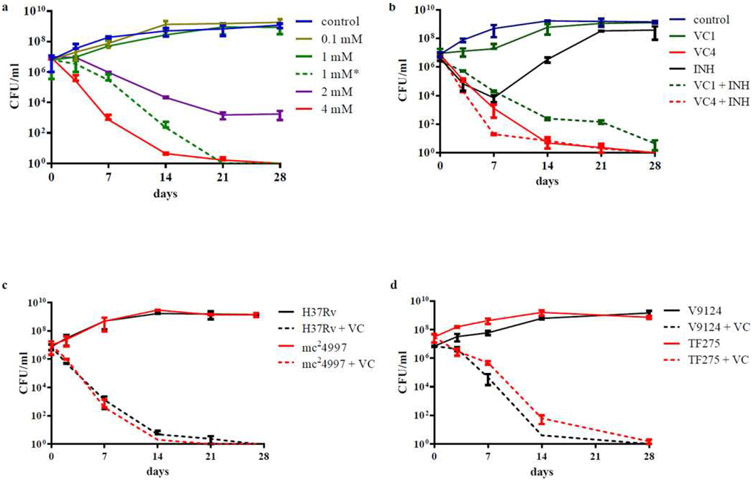Figure 1 -.
Vitamin C sterilizes drug-susceptible and drug-resistant M. tuberculosis strains (a) M. tuberculosis H37Rv cultures grown to an OD600nm of ≈ 0.75 were diluted 1/20 and treated with increasing amounts of vitamin C (VC, from 0.1 mM to 4 mM). 1 mM* represents an experiment where 1 mM of vitamin C was added to the culture daily for the first 4 days of treatment. (b) M. tuberculosis H37Rv was treated with INH (7 μM, 20× MIC), vitamin C (1 or 4 mM) and a combination of INH and vitamin C (1 and 4 mM). (c) mc24997, a RIF- and INH-resistant M. tuberculosis H37Rv strain was treated with vitamin C (4 mM). (d) Vitamin C (4 mM) was added to a drug-susceptible strain (V9124) and to an extensively drug-resistant strain (TF275) of M. tuberculosis from the Kwa-Zulu Natal province of South Africa. Growth was followed and CFUs were determined by plating 10- fold serial dilutions and incubating the plates at 37°C for 4 weeks. The experiments were done at leas t in triplicate and the average with standard deviation is plotted.
Vilchèze C, Hartman T, Weinrick B, Jacobs WR. Mycobacterium tuberculosis is extraordinarily sensitive to killing by a vitamin C-induced Fenton reaction. Nat Commun 2013;4:1881. doi:10.1038/ncomms2898.

